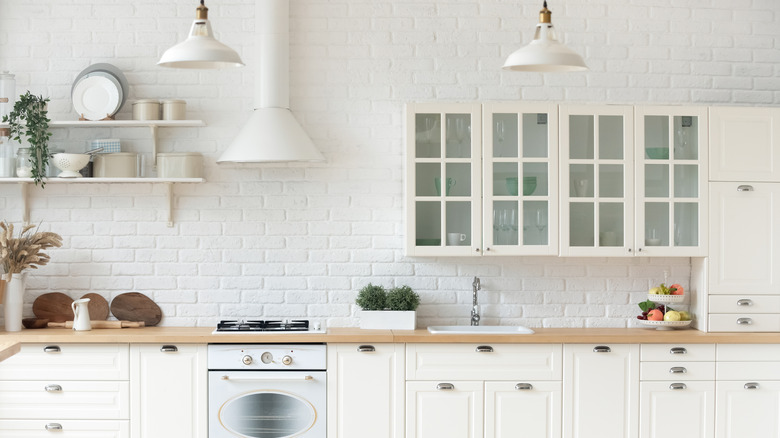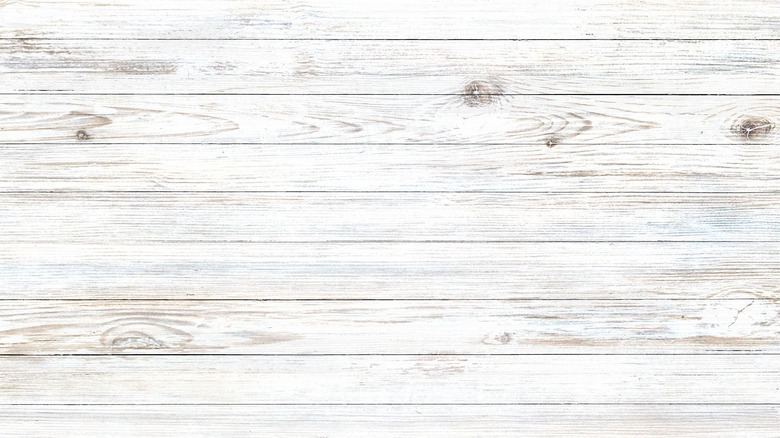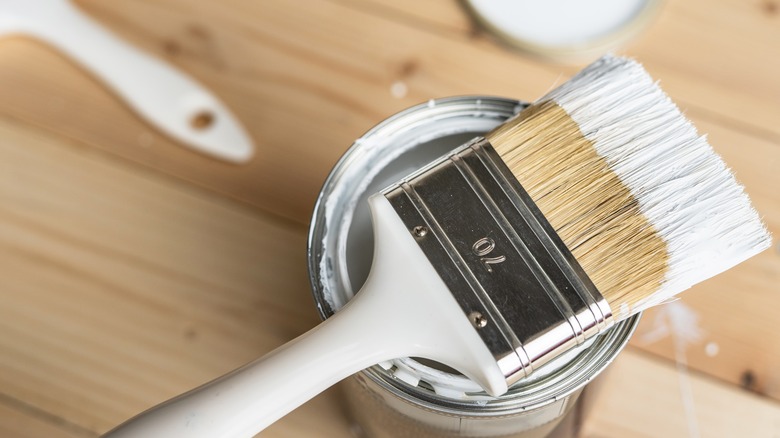Limewash Vs. Whitewash: What's The Difference Between The Painting Styles?
White wall finishes can impart a fresh, clean feel to any room in a home. When it comes to more options in terms of color variation and texture, however, several paint types offer a great alternative to a quick coat of standard white latex. Among these are whitewash and limewash paints. They both work great with the boho aesthetic and can take the modern farmhouse look up a notch in terms of countrified quaintness.
While the terms whitewash and limewash are sometimes used interchangeably since the finished products can both render white surfaces with a rustic appeal, that's not really accurate. There are some notable differences in the composition of these paints, how they're applied, and their finishes. One is also more environmentally friendly than the other and works better on brick, while the other is more durable and easier to keep clean. Find out about these distinctions before you decide which one would work best in your abode.
What is whitewash?
Historically, whitewashing has been accomplished using paint produced with slaked lime. This substance is formed when lime is mixed with water, creating a compound also known as calcium hydroxide (via Britannica). This type of paint had germ-fighting properties due to the lime in the mixture and many dairy barns were whitewashed with it back in the day.
Modern whitewashing, however, can easily be accomplished by DIYers using regular white latex paint thinned with water, as noted by HGTV. This type of whitewash is applied with a paintbrush following the grain of the wood being coated. Excess paint can be wiped away while you're working using a slightly moistened cloth to get the look you find most appealing.
After the whitewash dries, applying a clear-coat finish is recommended to seal the paint. This is necessary since the thin coating of white won't hold up as well as over time in comparison to full consistency paint. It's a two-step process, but the result can be just the right touch to a rustically appointed room if you like a surface with a bit of sheen.
How limewash paint differs from whitewash
Limewash paint is an age-old formula using crushed limestone and water. Like the first whitewashes, it has antimicrobial properties due to the lime content. The major distinction between limewash and modern whitewash, however, is that limewash is ecologically friendly. Without plastics and thinners found in regular paints, it's better for people and the environment. Also, as noted by Remodelista, limewash is desirable since it doesn't produce strong odors. The eco benefits have made limewash paint popular in recent years since it can prove a better alternative for those trying to keep a green home.
While you can make your own limewash paint by creating a lime putty and water mixture, the more convenient alternative is premixed commercial limewash paint that comes in white and other colors. This paint soaks into surfaces as you go, making it great for covering brick, but it does require a build-up of color with up to four coats applied with a brush, as well as misting with water between coats, per Homebuilding & Renovating. The result is a soft finish with a bit of texture thanks to the limestone.
One of the main drawbacks of limewashes, though, is that they're hard to keep clean. These surfaces cannot be easily wiped down to remove scuffs and stains due to the chalky finish. To freshen them, another coat of paint is required. This is definitely a point to keep in mind when deciding if limewash (versus whitewash) is right for your home.


